Mold Removal Treatment and Prevention
Table of content
- Common areas where mold is found
- 8 reasons why mold shouls be eliminated
- How to get rid of mold ?
- Mold remediation and containment area
- What causes mold problems ?
- The most common types of mold
- Mold treatment
- What are mold spores ?
- Mold health effects
- Mold removal cost
- Gestion Xpress Demolition Mold removal Experts
- F.A.Q
- Free Quote
Mold Removal Service | Treatment and Prevention
Gestion Xpress Demolition Mold Experts
Mold, if ignored, can grow and spread faster than you think. Mold spores are microscopic in size and can travel through your home to establish new mold colonies. This is a common house guest that usually grows where there is a lot of moisture.
Molds can be found everywhere; they are more visible due to dirt and debris on various surfaces. Mold spores are too small to see with the naked eye, but not microscopic enough that you can’t smell them. Mold often looks like a discolored film or fuzzy growths that vary in color depending on where they are. Mold can become dangerous when it affects your home, not only because it can be expensive to eliminate, but also because the spores that are released into the air can cause allergic reactions and even respiratory problems.
We offer you a free consultation on proper and safe sanitation procedures for your home. Our mold experts will recommend a cost effective action plan designed to rid your home of any mold infestation. Our experts will protect your home, belongings and family members throughout the mold remediation process. All remediation procedures are in accordance with EPA (Environmental Protection Agency) guidelines.
Our experts use effective containment techniques to ensure that all mold spores are eliminated from the affected area(s). We also know how important it is to create a healthy indoor environment after the procedure.
We treat mold whether on small or larger surfaces. Before proceeding, the source of the problem must be fixed. Then an air test is carried out by a consultant specializing in air quality controls.
Decontamination Services
Mold Decontamination
- Mold in Bathroom
- Mold Window
- Mold Attic
- Black Mold
- White Mold
- Yellow Mold
Common areas where mold is found
Mold can be found in various areas of a home, commonly thriving in damp or humid environments. Here are some common areas where mold is often found:
Bathrooms: Mold can develop in bathrooms due to high humidity levels. Pay attention to shower curtains, tiles, and areas around the bathtub.
Basements: Poor ventilation and moisture make basements susceptible to mold growth. Check for mold on walls, floors, and any stored items.
Kitchens: Keep an eye on areas around sinks, refrigerators, and dishwashers where water can accumulate. Mold may also appear on food items left unattended.
Attics: Inadequate ventilation and roof leaks can lead to mold in attics. Inspect insulation, wooden structures, and any stored items for signs of mold.
Crawl Spaces: Dark and damp crawl spaces can be breeding grounds for mold. Regularly inspect for moisture and proper ventilation.
Windowsills and Frames: Condensation on windows can create a conducive environment for mold growth. Check windowsills and frames for any visible signs.
Closets: Poor ventilation and infrequent air circulation can cause mold in closets, especially on clothing and stored items.
Air Conditioning and Heating Systems: Mold can develop in HVAC systems if there is moisture. Regular maintenance is crucial to prevent mold growth in ducts and filters.
Wall Interiors: Leaks from pipes or roofs can lead to mold growth inside walls. Look for discoloration, peeling paint, or a musty odor.
Laundry Rooms: Check behind and under appliances like washing machines for any water leaks. Damp clothes and towels can also contribute to mold growth.
Regular inspection, proper ventilation, and prompt addressing of water leaks or excess moisture are key to preventing and managing mold in these common areas of the home.
8 Reasons Why mold should be eliminated
Eliminating mold is important for several reasons, as mold can pose various health risks and structural issues. Here are key reasons why mold should be addressed and removed:
Health Concerns: Mold produces allergens, irritants, and in some cases, potentially toxic substances known as mycotoxins. Exposure to mold can lead to allergic reactions, respiratory problems, and other health issues, especially in individuals with compromised immune systems, allergies, or respiratory conditions.
Respiratory Issues: Mold spores can become airborne and be inhaled, leading to respiratory problems such as coughing, wheezing, nasal congestion, and throat irritation. Individuals with asthma or other respiratory conditions may experience exacerbation of symptoms.
Preventing Further Damage: Mold can cause structural damage to buildings and surfaces. It feeds on organic materials such as wood, drywall, and insulation, potentially compromising the integrity of the structure over time.
Preventing Property Devaluation: A home or property with visible mold can be perceived as unsanitary and may lose value on the real estate market. Mold issues may discourage potential buyers and renters.
Odor and Aesthetic Concerns: Mold growth often produces a musty and unpleasant odor. Additionally, the visual appearance of mold on walls, ceilings, or other surfaces can be unsightly and negatively impact the aesthetics of a space.
Improved Indoor Air Quality: Mold spores can contribute to poor indoor air quality. Removing mold helps ensure a healthier living or working environment by reducing the presence of airborne contaminants.
Reducing Liability: Property owners, landlords, and employers have a responsibility to provide safe and habitable spaces. Failure to address and eliminate mold issues may lead to legal liabilities, especially if occupants experience health problems as a result.
Preventing Recurrence: Simply cleaning visible mold may not be enough; identifying and addressing the root cause of moisture or water intrusion is crucial to prevent mold from recurring. Effective mold removal includes addressing the underlying issues to discourage future growth.
In summary, eliminating mold is essential for safeguarding both the health of occupants and the structural integrity of a property. It also helps maintain a clean and safe living or working environment. If mold is present, it’s advisable to consult with professionals to ensure thorough removal and remediation.
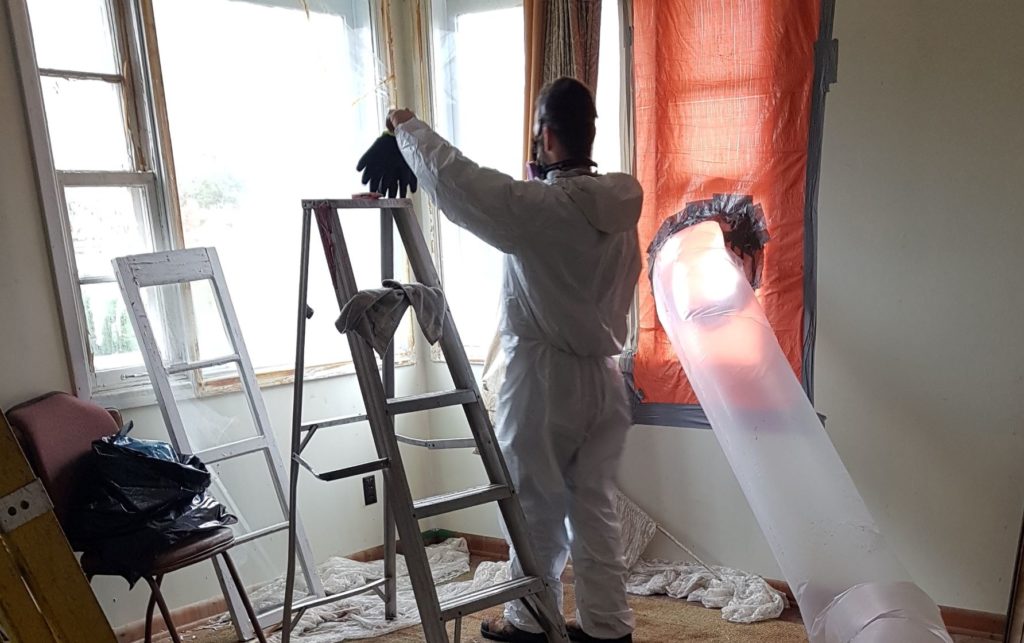
How to get rid of mold ?
There are different methods for removing mold. Most involve completely removing the moldy materials and replacing them. This is called “mold remediation” or mold remediation work. In some cases, a quick fix is enough. Mold remediation jobs are not always easy, cheap or quick. Molds can also be hidden in wall cavities where mold spores will still exist after the visible signs of mold have disappeared. The risk of mold increases when the humidity is high.
Removing mold can be a delicate process, but it is important to do it correctly to ensure health and safety. Here are general steps you can take to eliminate mold in your home:
- Mold Identification: Locate areas affected by mold. It can grow in damp areas such as bathrooms, basements, kitchens and attics.
- Personal Protection: Before you begin, be sure to wear personal protective equipment such as rubber gloves, an N95 face mask, and protective eyewear to avoid inhaling mold spores.
- Isolate the area: Isolate the affected area to prevent the spread of mold spores. Use plastic sheeting to seal the area and prevent mold from spreading to other parts of the house.
- Ventilation: Make sure you have adequate ventilation in the area by opening windows or using fans to exhaust stale air outside.
- Disposal of Contaminated Materials: Remove all materials affected by mold, such as carpet, drywall, baseboards, etc. Seal them in plastic bags before transporting them outside to avoid spreading the spores.
- Surface Cleaning: Use an antifungal solution or a mixture of water and white vinegar to clean surfaces affected by mold. Gently brush the mold to loosen it from the surface.
- Drying: Make sure the area is completely dry after cleaning. Using dehumidifiers can speed up the drying process.
- Future prevention: Identify and eliminate the source of moisture that encouraged mold growth. This could involve repairing leaks, improving ventilation or other measures to reduce humidity.
- Controlling Future Growth: Use antifungal products or antimicrobial coatings to prevent future mold growth.
It is important to note that mold can cause adverse health effects, and if you have significant concerns or health issues related to mold, consult a medical professional or environmental specialist.
The first step in mold remediation is to inspect the affected area. The inspector will look at the extent of the affected areas, as well as other aspects that could be causing damage or unfavorable sanitary conditions that need to be taken into account. This includes mold hidden behind walls or under floors.
Also check for signs of mold growth, dampness or water damage.
The next step in remediation is to find and stop any source of water or moisture. This may include sealing roof leaks, repairing plumbing leaks, or repairing water-damaged drywall. The key is to make sure there are no more leaks once the cleaning process has begun. We can then begin to remove the mold from the affected areas.
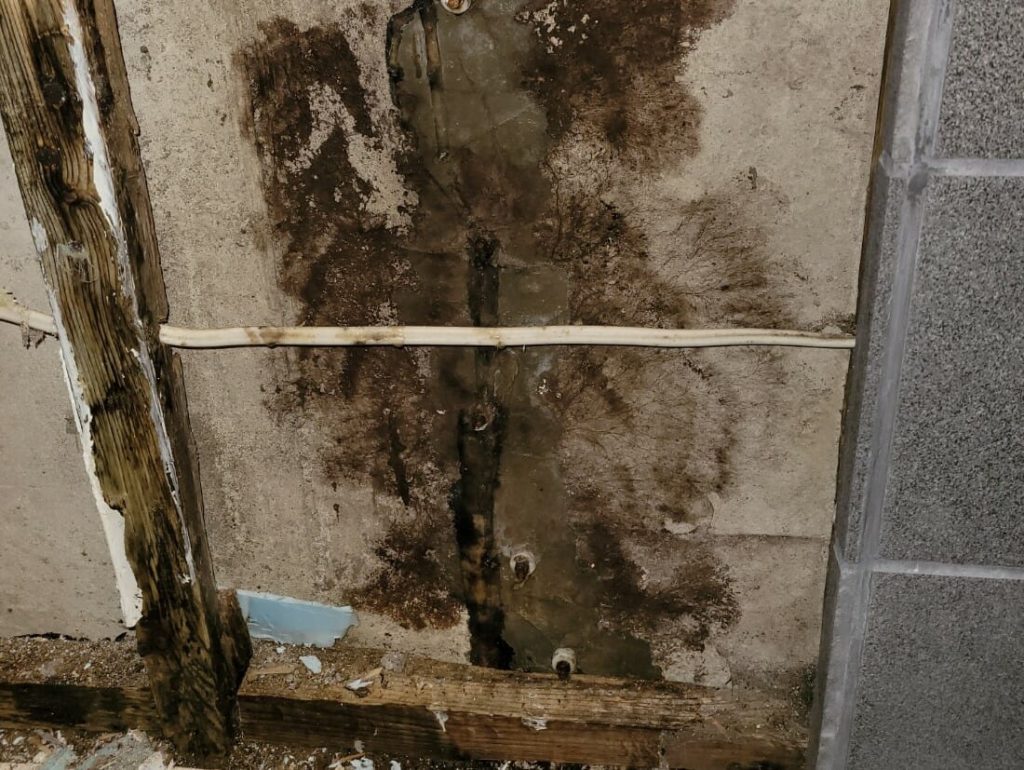
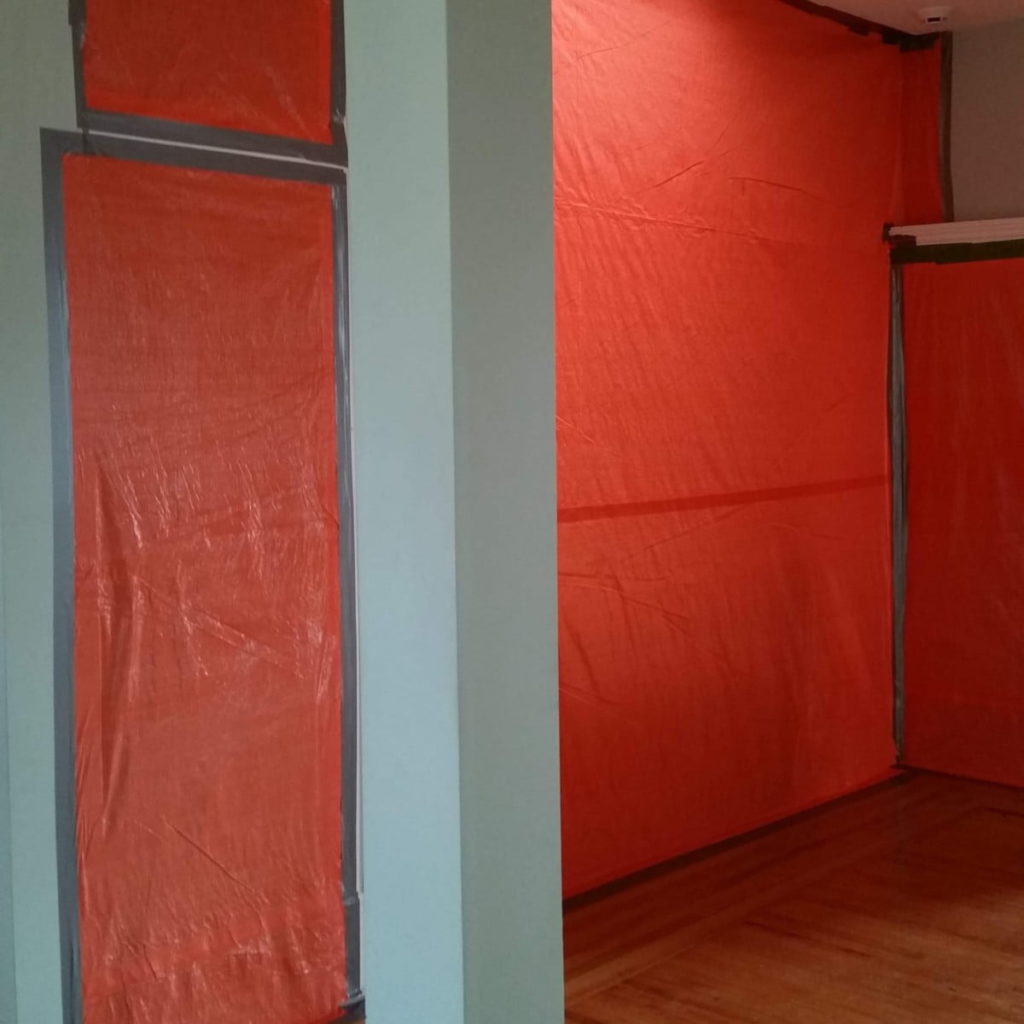
Mold remediation
Mold remediation is the comprehensive process of identifying, containing, and eliminating mold growth within a structure. It involves assessing the extent of mold infestation, addressing the source of moisture or water intrusion, implementing containment measures to prevent the spread of spores, removing and disinfecting affected materials, and ensuring proper cleaning of HVAC systems. The goal is not only to remove visible mold but also to prevent its recurrence by controlling moisture and improving ventilation. Post-remediation verification is often conducted to confirm the effectiveness of the remediation efforts. Mold remediation may require the expertise of professionals trained in environmental health and safety.
Mold removal Containment area
Mold Decontamination: Containment Zone
Mold remediation is a general term. Areas contaminated with mold should be treated in different ways depending on the severity of the contamination and the type of mold present. There are four basic categories of mold remediation: containment, cleanup, removal, and repair.
Containment area Mold decontamination
It is necessary to contain the area of mold contamination with airtight barriers. Mold spores are extremely small and can easily become airborne several feet from their source. Decontamination of an area affected by mold should include containment for two reasons
1) The nature of mold remediation work means that large amounts of mold spores will be released into the air, increasing the likelihood of workers and occupants breathing them into their lungs
2) Concentrations of mold spores from uncontained contaminated areas will reduce the effectiveness of any mold remediation work performed. Mold spores contained in a contaminated area on surfaces or in porous materials can be reintroduced into the atmosphere.
Before starting the mold decontamination, we set up a containment area to prevent the spread of spores from other rooms. To do this, a negative pressure machine (HEPA) is installed inside the contamination zone throughout the work.
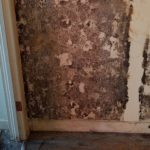
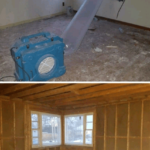
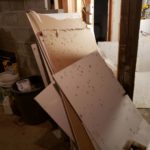
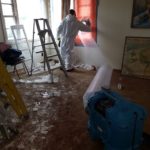
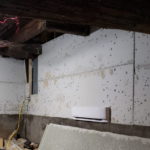
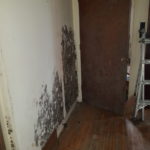
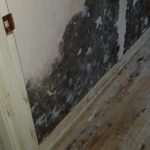
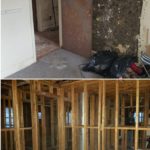
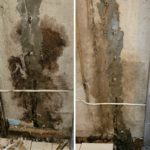
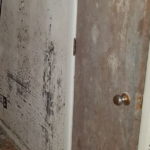
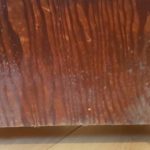
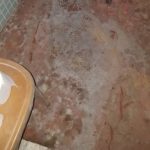
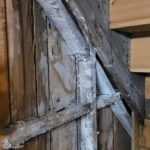
Once the area is contained, all porous and non-porous items in the contaminated area should be removed and replaced. All hard surfaces (walls, floors, etc.) can be cleaned and decontaminated. Mold can be effectively removed from hard surfaces. However, mold spores are very difficult to eradicate once they have penetrated porous materials like drywall.
Mold grows on any organic material, so it is often necessary to replace insulation, wall panels and carpeting after an area has been decontaminated.
Above all, you must avoid exposing yourself to mold spores. To do this, we use the appropriate equipment to carry out the cleaning. During the works, access to the site is limited and we take the measures to be followed to be admitted to the site. Vulnerable people should leave the house during cleanup. The first step in cleaning is to remove non-salvageable materials.
We clean the surfaces using an ecological fungicide cleaner. Subsequently, an anti-microbial is applied to prevent the reappearance of mold.
Air purification
Air purification can complement mold removal efforts by reducing the concentration of airborne mold spores. Look for air purifiers with HEPA filters to capture small particles, including mold spores. Activated carbon filters can help eliminate mold-related odors. Some models use UV-C light technology to neutralize mold spores. Choose an appropriately sized purifier for the room, and run it continuously, especially in areas prone to mold growth. Regular maintenance, including filter replacement, is crucial for optimal performance. While air purifiers aid in reducing airborne spores, it’s essential to address the mold source through thorough remediation and moisture control. In severe cases, consult mold remediation professionals for a comprehensive assessment and solutions.
Remember that air purifiers are a supportive measure and should be used in conjunction with comprehensive mold removal efforts. Controlling moisture, addressing water leaks, and removing affected materials are essential components of a successful mold remediation strategy.
Remember that after removing mold, it is equally important to prevent future growth of mold or other contaminants by correcting any major problems in your home’s structure or environment that caused the problem. in the first place. It is not always possible to see the molds, since they can be hidden inside the walls, under the floors or grow in the ceiling. To find the source of the problem, it may be necessary to make openings to be able to find the direct source of the problem. If you are unable to identify the source of the problem or would like further advice, the services of an expert may prove useful.
What causes mold problems?
Several factors can be responsible for a mold problem. And several places in your house can be affected.
traitement moisissures
Mold on Walls & Mold on wood
Mold can attack the structure of your home, which could damage it. It is therefore essential to act quickly.
Black Mold in Bathroom
Bathroom ceilings are a favorable place for the formation of mold, especially in the absence of a ventilation system.
Mold on Window
Water can sometimes seep under window sills. It can sometimes take months to notice an infiltration problem. If the problem is not treated quickly, the opening of the walls and the replacement of materials should be considered.
Mold in Basement
Following water infiltration, make sure to completely dry the subfloor before laying the new floor. If hesumidification has not been done properly, mold problems may persist
The most common types of mold
Black Mold
By black mold, we generally mean a type of toxic mold. Prolonged exposure to black mold can lead to respiratory problems, eye irritations and different other complications. Particularly fond of damp places. It often manifests itself in the bathroom, kitchen and even in the bedroom. The presence of mold can be caused by various factors, for example water infiltration, condensation or a leak.
White Mold
Thrives in a humid environment. Many homeowners won’t even realize they have a white mold problem because of its color, which makes it difficult to detect. It can grow on plants, fabrics, food, and many other organic materials like drywall, wood, and carpets.
Yellow Mold
Yellow mold like any other type of mold is a fungus. It is a living organism, which feeds on a combination of humidity, oxygen and organic matter, compounds found in the materials of the house (wood, gypsum). Many species of mold can take on a yellow color. The hue and appearance can vary depending on the type of mold present, ranging from an intense yellow to a much lighter hue.
Mold Treatment
Mold is a very common problem in homes and can pose health risks if left untreated. A mold infestation can cause allergic reactions, asthma, and other respiratory problems in people who live in a mold-affected home. When mold appears on surfaces such as clothing or furniture, you need to get it out before the mold spores spread to other parts of the house.
If mold appears in a bathroom or kitchen, there is a much higher chance that mold spores will spread throughout the house. The first step to take when mold has started to grow indoors is to clean it up as soon as possible. If mold is left to linger, the mold spores will continue to spread, increasing the risk of health problems. It is best to remove mold from any interior surface as soon as you see it appear.
Mold is a very common problem in homes and can pose health risks if left untreated. A mold infestation can cause allergic reactions, asthma, and other respiratory problems in people who live in a mold-affected home. When mold appears on surfaces such as clothing or furniture, you need to get it out before the mold spores spread to other parts of the house. If mold appears in a bathroom or kitchen, there is a much higher chance that mold spores will spread throughout the house.
The first step to take when mold has started to grow indoors is to clean it up as soon as possible. If mold is left to linger, the mold spores will continue to spread, increasing the risk of health problems. It is best to remove mold from any interior surface as soon as you see it appear.
What are Mold spores ?
Like Alternaria, Cladosporium and Penicillium are present in most homes. This type of mold is usually found on decaying leaves and logs and grows indoors when humidity conditions are favorable. They can cause infections that affect the skin, throat, lungs and eyes. There are a number of reasons why a type of mold grows indoors. The source can be external, like leaves and logs, but it can also be from other surfaces or even other building materials that have become damp or disturbed, creating a new food source for the spores. The type of mold present depends on the temperature, the type of material and the type of food source available.
Pollen is a type of fungus that is present in our homes for a short time in spring, summer and fall. They are released by trees, grasses and weeds to fertilize other plants. Although not considered harmful to humans or pets, pollen spores can cause an allergic reaction. Allergic reactions to pollen are the type of mold people usually think of when they think of indoor allergies.
Pollen is released by the type of mold outdoors and brought indoors on clothing or skin. If it gets on surfaces, it will continue to release spores for several hours, even after being vacuumed up. Mold spores are found everywhere in the air, including inside buildings. They are generally harmless, but can sometimes trigger allergic reactions or asthma attacks in some people.
People with mold allergies can develop hay fever-like symptoms when exposed to mold spores. These symptoms include sneezing, runny nose, itchy eyes, and rashes. People with asthma may see their symptoms worsen when exposed to mold spores. Mold spores can be found in damp or water-damaged buildings, especially if there is insufficient ventilation and heating for the occupants. In this case, the amount of airborne mold particles, which cause allergic reactions or asthma attacks in some people, increases.
Mold fungi produce spores that are invisible to the naked eye and can, in most species, become airborne. Molds come from microscopic fungi found in nature. Their spores get inside buildings through various means
- ventilation ducts
- the material
- the wind
- insects and humans.
Once inside, they can cling to many surfaces. If the three conditions for their growth are met, high humidity, temperature between 10 and 40 degrees Celsius and organic matter (wood, cardboard, leather, plasterboard) as food, they can proliferate. They in turn produce spores, which are reproductive structures allowing the propagation of fungal species, and it is in particular by breathing in these microscopic particles that humans can develop diseases. The concentrations of spores in the air depend on the surrounding conditions, their number varying during the seasons as well as during the same day.
It is when the fungal structures multiply and are found in the form of aggregates that one can observe black, gray, white or green spots, of a powdery texture, which smell of mold, earth or alcohol. Dark circles, peeling paint, blistered surface materials, signs of water infiltration, often betray their presence on the surface of materials or behind them.
Mold health effects
Exposure to mold can have various health effects, and individuals may react differently depending on factors such as the type of mold, the extent of exposure, and individual susceptibility. Common health effects associated with mold exposure include:
Allergic Reactions: Many people are allergic to mold. Inhaling or coming into contact with mold spores can trigger allergic reactions such as sneezing, runny or stuffy nose, itchy or watery eyes, and skin irritation.
Respiratory Issues: Mold exposure can exacerbate respiratory problems, particularly in individuals with asthma or other pre-existing respiratory conditions. Symptoms may include coughing, wheezing, chest tightness, and shortness of breath.
Sinus Infections: Prolonged exposure to mold can contribute to sinusitis (sinus infections), characterized by congestion, facial pain, and nasal discharge.
Skin Irritation: Mold exposure may lead to skin irritation in some individuals, causing redness, itching, or rash.
Mycotoxin Exposure: Some molds produce mycotoxins, which are toxic substances. Exposure to mycotoxins can result in more severe health effects, including neurological symptoms, fatigue, and immune system suppression. However, significant exposure to mycotoxins is relatively rare.
Infection Risk: Individuals with compromised immune systems, such as those undergoing chemotherapy or individuals with HIV/AIDS, may be at a higher risk of fungal infections from mold exposure.
Hypersensitivity Pneumonitis: In rare cases, prolonged exposure to high levels of mold can lead to hypersensitivity pneumonitis, an inflammatory lung condition.
It’s important to note that not everyone exposed to mold will experience health problems, and the severity of symptoms can vary widely. Additionally, the type of mold and the concentration of mold spores in the environment play a role in determining health effects.
If individuals experience persistent or severe symptoms that they suspect are related to mold exposure, it is advisable to consult with a healthcare professional. Addressing the underlying mold issue through remediation is essential to prevent ongoing health concerns. Individuals with known mold allergies or respiratory conditions should take extra precautions in environments where mold is present and seek professional help for remediation if needed.
Mold removal cost
The cost of mold remediation can vary significantly depending on several factors, including the extent of the mold problem, the type of mold, the affected areas, and the methods used for remediation. Other factors that can influence the cost include the location, accessibility, and whether additional services such as water damage repair are needed. Here are some general considerations regarding mold remediation costs:
Size and Scope of the Problem: Larger areas with extensive mold growth typically require more extensive remediation efforts, which can result in higher costs.
Type of Mold: Some types of mold are more challenging to remediate than others. The specific type of mold present can impact the complexity of the remediation process and, consequently, the cost.

Affected Materials: The type of materials affected by mold (e.g., drywall, insulation, carpeting) can influence the cost. The removal and replacement of certain materials may be more labor-intensive and costly.
Accessibility: The accessibility of the affected areas can affect the ease of remediation. Difficult-to-reach areas may require more time and effort, impacting the overall cost.
Testing and Inspection: If mold testing and inspection services are required, these add to the overall cost. Testing may be necessary to identify the type and extent of the mold problem.
Preventive Measures: Implementing preventive measures, such as improving ventilation or addressing water leaks, may be part of the remediation process and can affect the overall cost.
Insurance Coverage: Some homeowner’s insurance policies may cover mold remediation costs, especially if the mold growth results from a covered peril, such as a sudden water leak. Check with your insurance provider to understand coverage.
Given the variability in mold remediation costs, it is advisable to obtain multiple quotes from reputable mold remediation professionals. The quotes should include a detailed breakdown of the services provided and any additional costs. Keep in mind that investing in thorough and effective remediation is crucial to prevent future mold issues and potential health risks.
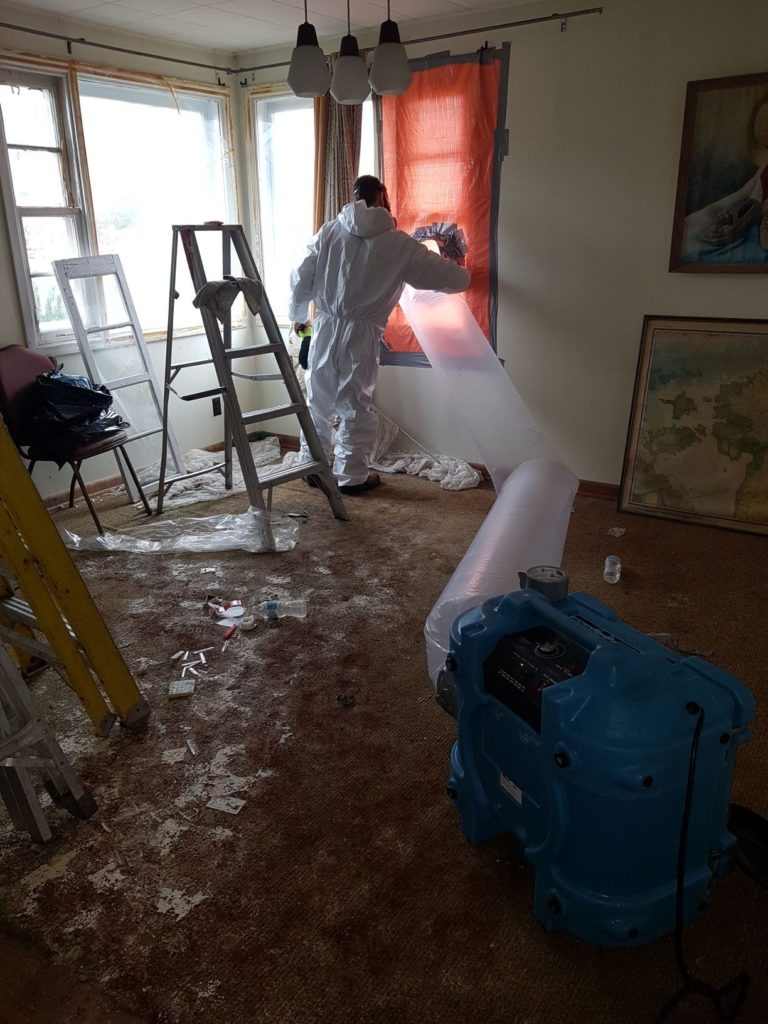
Gestion Xpress Démolition - Decontamination Experts
To correct your mold problem permanently and definitively, we offer you cutting-edge expertise to remedy the problem in a safe, professional manner.
Take advantage now of our services as soon as possible and at competitive prices.
Don’t wait any longer contact us now for a quick and free evaluation.
We are not only experts in mold decontamination, our company is also specialized in asbestos decontamination. Like mold, asbestos can cause many health problems. Do not wait any longer, contact us.
Gestion Xpress Démolition Experts in mold and asbestos Removal in Greater Montreal.
F.A.Q. About Mold remediation
What does mold smell like ?
It’s often described as musty and earthy, and may even smell like rotting vegetables or plants. You might notice a musty smell, but not be able to see any mold growing.
How to kill mold spores?
When mold is damp, it can be removed by scrubbing it dry. Dry-rubbing mold is similar to sanding furniture with sandpaper, causing spores to seep throughout the area. It is essential to keep the sponge moist, but not soggy. Mold can be removed by mechanical force.
Mold Exposure : Healt effects of Mold ?
The dangers of molds and mycotoxins. Molds, as a source of irritation of the mucous membranes of the respiratory tract and of allergies, can produce spores and toxic chemicals. Exposure to molds can cause asthma, rhinitis and bronchitis.
Symptoms of mold in house ?
Mold on the interior walls of a home is caused by many factors. Undesirable indoor air conditions, such as confined, poorly ventilated, and insufficiently ventilated rooms, can all contribute to increased humidity levels inside homes that cause mold on walls. They can come from anywhere in your home.
How do you know if mold is toxic?
When inhaled, airborne spores can be hazardous to health. How do you know if mold is dangerous? The appearance of blackish spots on the walls or floors of the house is an indication of the presence of mold.
Does bleach kill mold?
In order to remove mold stains properly, bleach is an excellent solution. To do this, put some bleach in a spray bottle, spray on the mold and leave on for ten minutes before rinsing.
